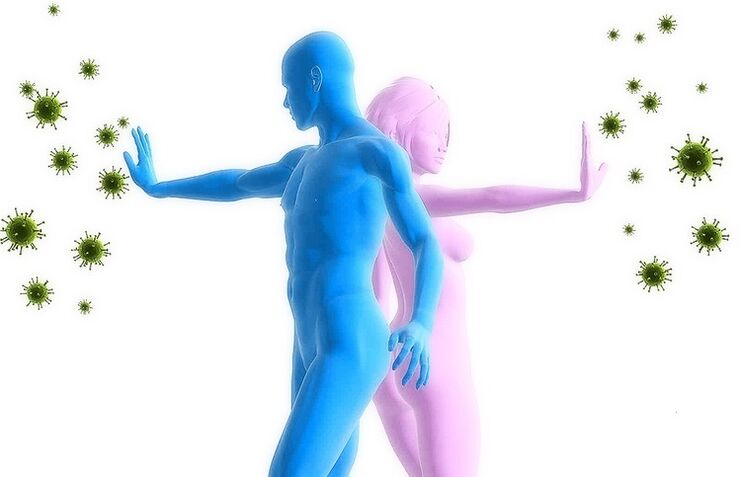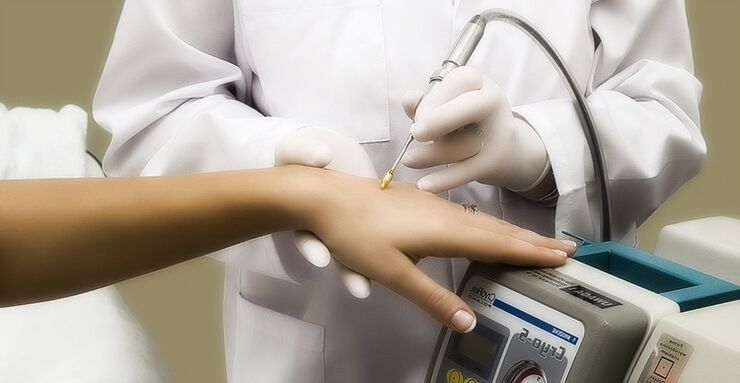Human papillomavirus is an oncogenic disease. The main manifestations of HPV are the formation of warts, papillomas and condylomas on the skin and mucous membranes. Both women and men are affected by the virus.
Causes of the emergence and activation of HPV
Note! The main reason for the appearance of papillomavirus in the body is an infection from an infected person.
Factors that cause infection include:
- weakened immunity;
- bad habits;
- frequent and severe nervous shocks;
- viral infections;
- pathology of the gastrointestinal tract;
- frequent change of sexual partners, unprotected sex.
Is it possible to treat human papillomavirus?
HPV can be treated in the active stage of development.
The main goal of treatment is to eliminate the symptoms and strengthen the protective mechanism of the human body.
Different treatments can be used depending on the type, symptoms, and complications of the virus.
Can HPV be treated permanently?
One feature of HPV is that when it enters the body, it stays there forever. The virus is dormant and inactive when the body has a strong defense mechanism and is not exposed to the above risk factors.
Papillomavirus can reactivate with a weakened immune system, poor hygiene and poor health.

Methods of papillomavirus infection
Infection with the HPV virus occurs through direct contact with an infected person, through mucous membranes and skin. There are several ways of infection:
- The main way is sexual intercourse. The risk of transmission of papillomavirus from an infected partner during unprotected intercourse is 60-70%. The risk increases significantly with frequent changes of partners. Infection is possible in the presence of microtraumas in the mucous membranes, even during kissing or oral sex;
- HPV infection can also occur through household contact: using the same towels, utensils and hygiene items as an infected person. There is a risk of papillomavirus infection in public saunas, baths and swimming pools;
- Vertical transmission of the virus is also possible - the fetus born at birth.
Why is human papillomavirus dangerous?
All types of HPV can be conventionally divided into two categories: low-risk and high-risk oncogenic viruses. Groups of the second category can develop into oncological diseases.
Note! HPV poses the greatest risk for women: high oncogenic strains of the virus are most susceptible to them.
In women, papillomavirus can cause a number of diseases related to the reproductive system:
- cervical pathology: erosion, leukoplakia, adenocarcinoma, cancerous tumors;
- Oncology of external genitalia, anal region.
The development of the disease is also accompanied by the appearance of warts and papillomas on the genitals, extremities, armpits and neck. Neoplasms cause anxiety, interfere with hygiene and normal life, so they should be discarded.
Men are less likely to develop cancer with HPV, but this is not ruled out. In addition, acute angular papillomas can develop in the penis, which can cause discomfort and interfere with normal sexual activity. Such neoplasms should be removed immediately.
Diagnostic methods
Diagnosis usually begins with a visual examination by a physician. During the examination, the mucous membranes and skin integuments are examined, especially the areas where warts and papillomas are most common should be examined: the genital area, armpits, neck.
The main methods of diagnosing HPV include:
- Women must undergo colposcopy, examination of the cervix and vagina, as well as cytological tests (removal of mucous membranes). If you suspect oncology, an additional biopsy may be ordered;
- PCR analysis (polymerase chain reaction). Allows the detection of viral DNA from any material submitted for analysis;
- The digen test is a more accurate analysis. The results can be used to detect papillomavirus, identify its type by DNA, and determine the degree of malignancy.
General treatment regimen for HPV
There are currently no single international protocols for the treatment of human papillomavirus. Two-component treatment regimens have proven to be the best: they combine surgical removal of viral lesions and simultaneous administration of specific antiviral therapy. The effectiveness of this approach in the treatment of HPV is up to 90%.
Features of treatment in children
When HPV is activated in a child, doctors first resort to conservative therapies: prescribing immunomodulators and vitamins, as well as topical treatment of rashes with ointments and compresses.
Surgery is generally recommended only if the growth of warts and papillomas has been observed during the observation.
Features of treatment during pregnancy
Note! At the time of a child's birth, HPV does not clearly affect its development or the course of pregnancy in general.
The main recommendations for the treatment of papillomavirus during pregnancy:
- If the virus is detected before pregnancy, it should be treated immediately. This will normalize immunity and prevent liver and other infections;
- It is desirable to plan the onset of pregnancy at the end of the second period after the end of treatment;
- The course of treatment for HPV during pregnancy should begin no later than the 28th week of pregnancy - the period when all the organs in the child are formed. This will help to avoid the negative effects of medications on the child's body.
treatment of papillomavirus
The main treatments for HPV are:
- taking special antiviral drugs;
- course of immunomodulators;
- surgical removal of neoplasms (papillomas, warts);
- reduce the symptoms of the disease through traditional medicine.

Antiviral therapy
It is important! The choice of medication depends on the type of virus and the characteristics of the body. Only a doctor can prescribe a course of therapy and a dose of medication, which can aggravate the condition of self-medication.
Immunomodulatory drugs
Immunomodulators should be prescribed by a doctor according to the patient's immunogram - this will give a faster and more stable result.
Surgical approach (removal of growth)
The main goal of HPV surgery is to remove virus-modified cells from the body.
Removal can be done in several ways, depending on the characteristics of the disease and the doctor's instructions:
- Electrocoagulation. Depending on the HPV group, the effectiveness of treatment is 80% to 95%;
- Laser rash removal. High efficiency, but high probability of recurrence. In addition, after the procedure, the wounds heal for a long time - up to 4 weeks;
- radio wave surgery. Used to eliminate single formations;
- Cryotherapy. Efficacy - up to 65%, relapse occurs in 40-50% of cases;
- Chemical destructive substances. Applies only to rashes in the genital area. Relatively low efficiency - no more than 40%.
Folk remedies
Note! Alternative medicine should not be considered as a complete treatment for HPV. However, they are a convenient and harmless way to weaken the active manifestation of the virus.
The most effective for papillomavirus are such folk remedies: fresh potato juice, steeped rope, a mixture of garlic and vinegar, Kalanchoe leaves, tea tree oil.
They should be used in the form of compresses, dressings for external manifestations of HPV - papillomas, warts.
Prevention of HPV recurrence
The main goals of preventing the recurrence of warts and papillomas are to strengthen immunity and follow the rules of hygiene at home and in public places. Recommendation:
- to follow a proper diet;
- undergo vitamin therapy;
- follow a normal work schedule, get enough sleep and rest completely;
- increase physical activity.
It is important! Vaccination is an effective way to prevent HPV reactivation - it can be used to protect against the most dangerous groups of the virus for a long time.























